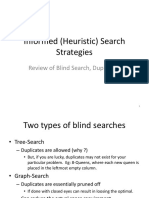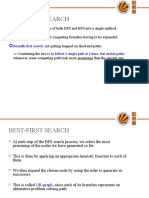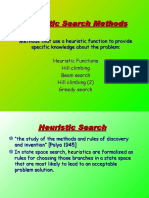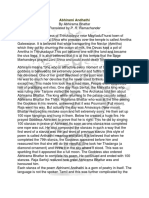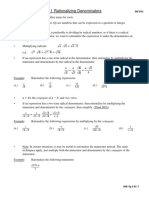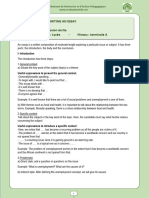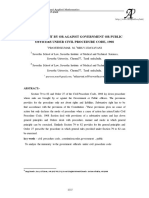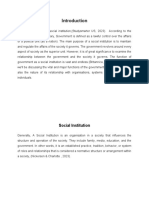0% found this document useful (0 votes)
66 views19 pagesGenerate and Test
The document outlines various informed search methods such as generate-and-test, hill climbing, best-first search, problem reduction, and constraint satisfaction. It emphasizes the use of heuristics to improve search efficiency by estimating the cost from a current node to the goal. The best-first search algorithm, including the A* algorithm, is discussed in detail, highlighting the importance of evaluating nodes based on their potential to lead to a solution.
Uploaded by
Amar SinghCopyright
© © All Rights Reserved
We take content rights seriously. If you suspect this is your content, claim it here.
Available Formats
Download as PDF, TXT or read online on Scribd
0% found this document useful (0 votes)
66 views19 pagesGenerate and Test
The document outlines various informed search methods such as generate-and-test, hill climbing, best-first search, problem reduction, and constraint satisfaction. It emphasizes the use of heuristics to improve search efficiency by estimating the cost from a current node to the goal. The best-first search algorithm, including the A* algorithm, is discussed in detail, highlighting the importance of evaluating nodes based on their potential to lead to a solution.
Uploaded by
Amar SinghCopyright
© © All Rights Reserved
We take content rights seriously. If you suspect this is your content, claim it here.
Available Formats
Download as PDF, TXT or read online on Scribd
/ 19








